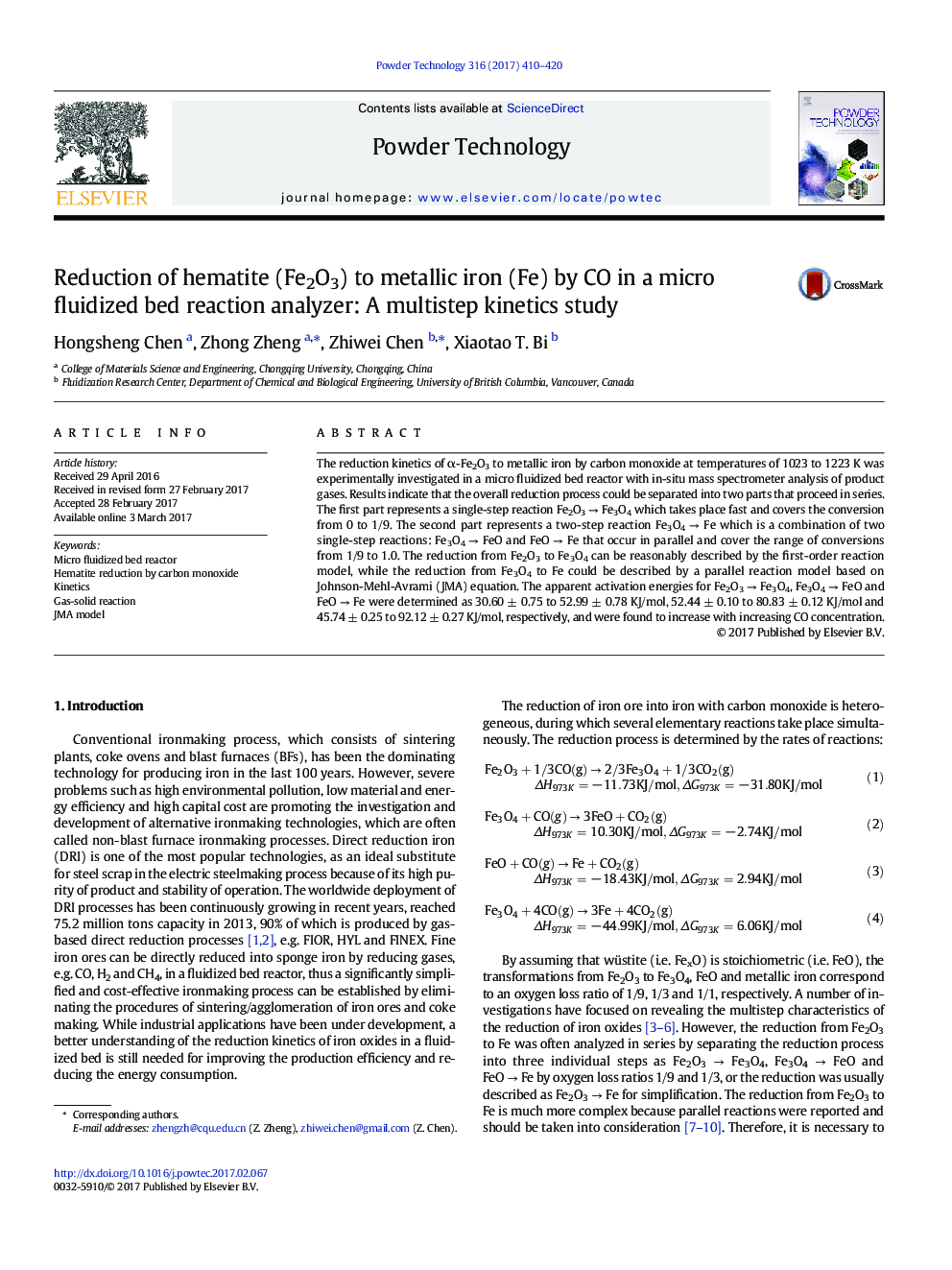| Article ID | Journal | Published Year | Pages | File Type |
|---|---|---|---|---|
| 4915155 | Powder Technology | 2017 | 11 Pages |
â¢A micro fluidized bed reactor was used to investigate the reduction of α-Fe2O3.â¢The reduction of hematite was interpreted as a two-stage process.â¢The first stage was reasonably analyzed by the first-order reaction model.â¢The second stage was successfully described by the JMA equation using SPSS.
The reduction kinetics of α-Fe2O3 to metallic iron by carbon monoxide at temperatures of 1023 to 1223 K was experimentally investigated in a micro fluidized bed reactor with in-situ mass spectrometer analysis of product gases. Results indicate that the overall reduction process could be separated into two parts that proceed in series. The first part represents a single-step reaction Fe2O3 â Fe3O4 which takes place fast and covers the conversion from 0 to 1/9. The second part represents a two-step reaction Fe3O4 â Fe which is a combination of two single-step reactions: Fe3O4 â FeO and FeO â Fe that occur in parallel and cover the range of conversions from 1/9 to 1.0. The reduction from Fe2O3 to Fe3O4 can be reasonably described by the first-order reaction model, while the reduction from Fe3O4 to Fe could be described by a parallel reaction model based on Johnson-Mehl-Avrami (JMA) equation. The apparent activation energies for Fe2O3 â Fe3O4, Fe3O4 â FeO and FeO â Fe were determined as 30.60 ± 0.75 to 52.99 ± 0.78 KJ/mol, 52.44 ± 0.10 to 80.83 ± 0.12 KJ/mol and 45.74 ± 0.25 to 92.12 ± 0.27 KJ/mol, respectively, and were found to increase with increasing CO concentration.
Graphical abstractDownload high-res image (195KB)Download full-size image
